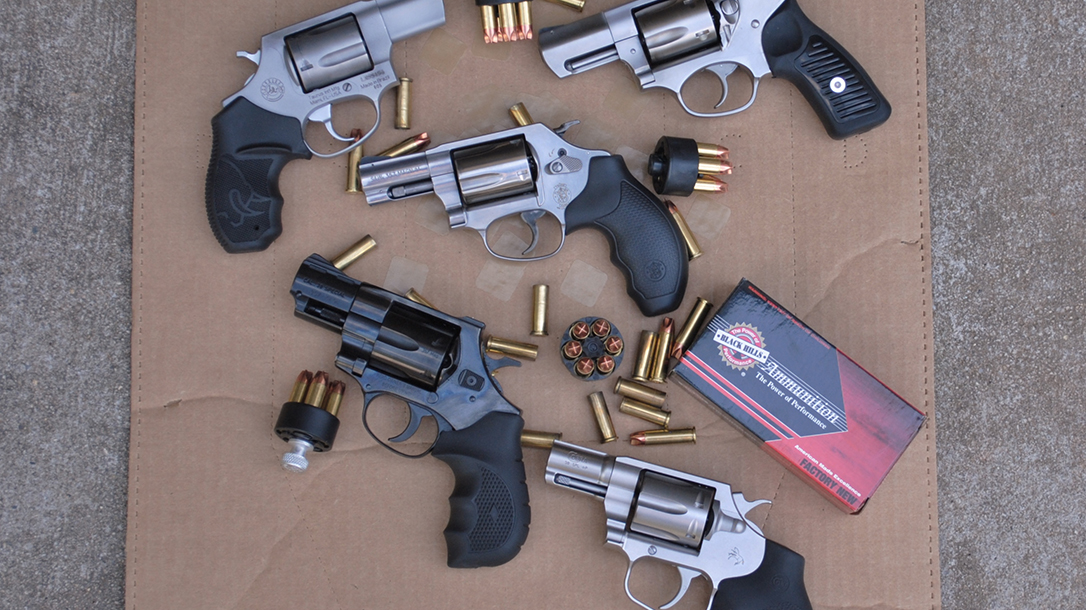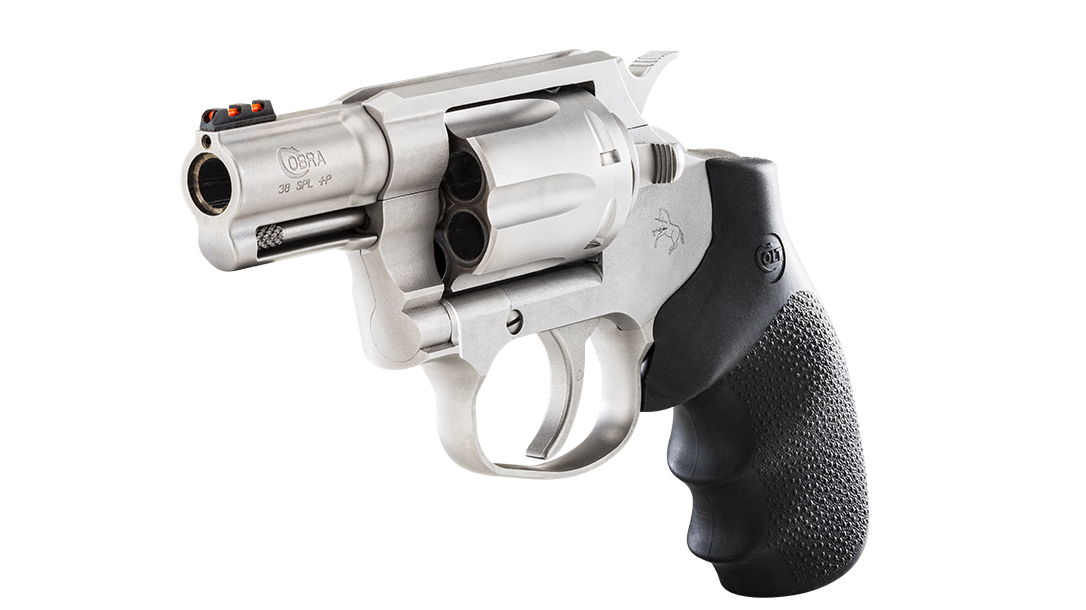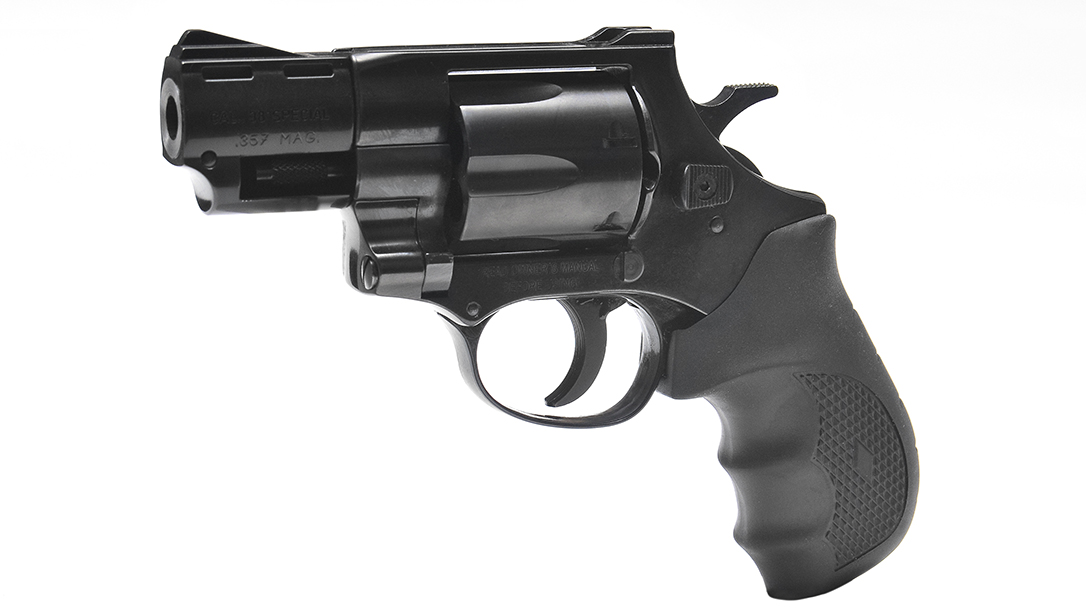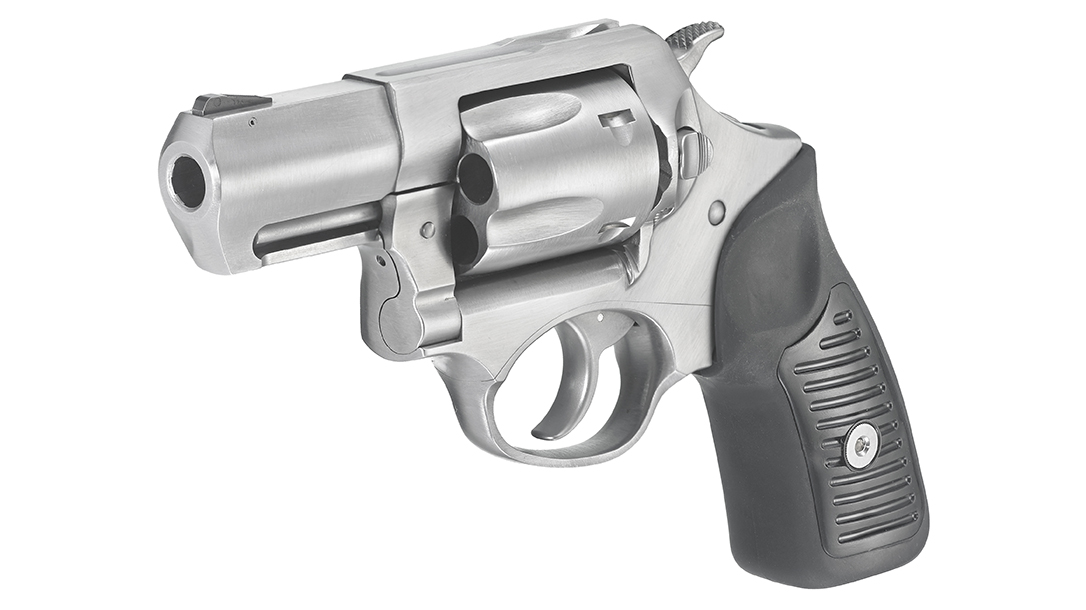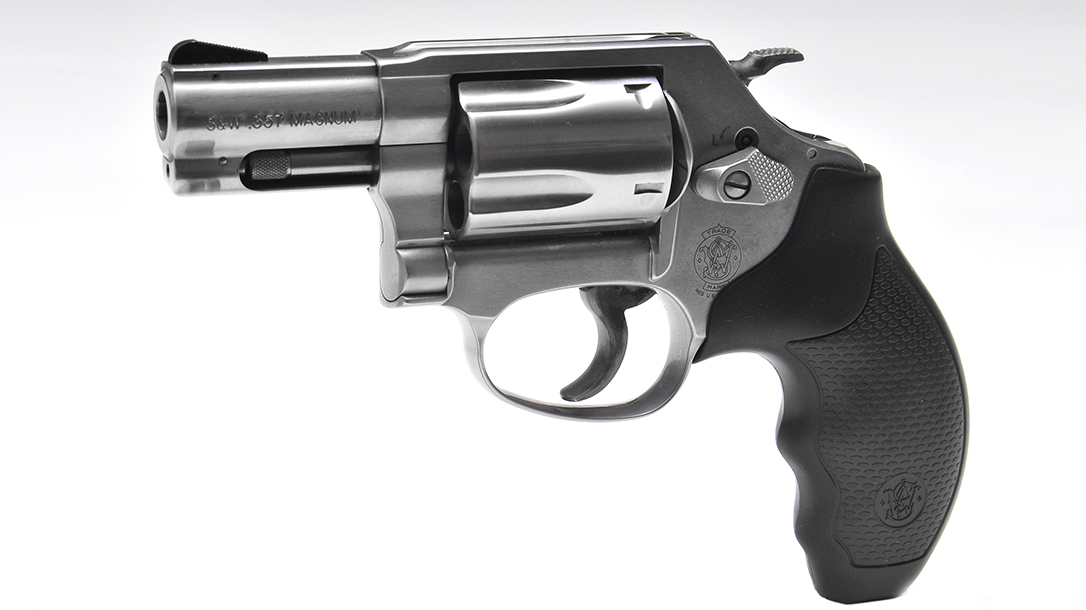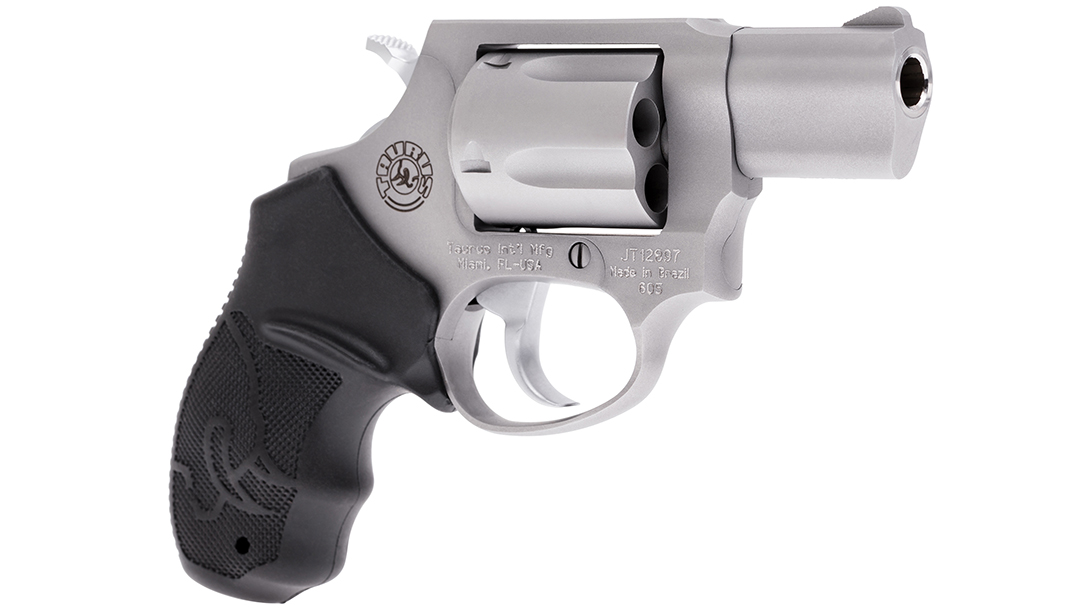Have you noticed how seldom you see a photo of a revolver on the cover of a gun magazine nowadays? I was at a newsstand the other day and perused half a dozen well-known gun magazines. Their covers were emblazoned with pictures of the newest polymer “wondernine” pistol or AR-platform rifle. Whatever happened to concealable revolvers?
Readers familiar with my scribblings know that when it comes to handguns, despite my admiration for semi-auto pistols, deep down I have always been—and will always be—an unabashed fan of double-action revolvers. I cut my handgunning teeth on self-cocking wheelguns and developed an admiration for the breed.
Advertisement — Continue Reading Below
The Reason for Concealable Revolvers
And at the danger of repeating myself (again), let me state the reasons for my admiration. First, few handguns handle better than a quality double-action revolver. Period. Its operation is also simple and straightforward: Lift the revolver, aim, pull the trigger. If it doesn’t go bang, all you need to do is pull the trigger again.
Then there’s safety. To make a double-action revolver “safe,” you simply take your finger out of the triggerguard. Is it loaded? Open the cylinder and find out. And finally, we can’t forget about reliability: A revolver’s functioning is not influenced by variables in ammunition, magazine designs, the shooter’s grip or recoil. It has 100-percent ammunition tolerance with the proper caliber. Provided that the shooter’s trigger finger functions, chances are the revolver will, too.
Admittedly, semi-autos have replaced revolvers in the holsters of most police officers and in the pockets and nightstands of many civilian shooters. But there’s one area in which the popularity of revolvers has not diminished. In fact, it has actually seen a resurgence. That area is small, concealable revolvers meant for personal defense.
Advertisement — Continue Reading Below
For most of the 20th century, the term “concealable handgun” was usually synonymous with .38 snubbie revolvers. In fact, for decades, the two most popular — the S&W Chief’s Special and Colt Detective Special — were .38 Special revolvers with 2-inch barrels. They were the overwhelming choice of American police. Additionally, they were equally popular with civilians who carried a handgun for self-defense or kept one in their nightstand drawer in case something went bump in the night.
Despite the plethora of compact semi-autos today, the snubbie revolver’s compactness, simplicity of operation, state of instant readiness and reliability make it the choice of many folks who go about daily activities armed.
Concealable Revolvers: The Contenders
To see how the current crop of snubbies perform, I obtained five revolvers from various manufacturers. There were the Colt Cobra, European American Armory (EAA) Windicator, S&W Model 60, Ruger SP101 and Taurus Model 605.
Advertisement — Continue Reading Below
These wheelguns have many features in common and others that set them apart. They’re double-action/single-action (DA/SA) revolvers with external hammer spurs. Loading and unloading is accomplished by swinging their cylinders out to the left side and pushing on their ejector rods. This simultaneously extracts all cartridge cases. The cylinder release catches on the EAA, S&W and Taurus are pushed forward, the Colt’s is pulled to the rear and the Ruger’s is pushed inward.
The Colt, Ruger, S&W and Taurus revolvers are all made from stainless steel, while the EAA stands out with an aluminum alloy frame mated to a steel cylinder and barrel. Three of the guns have 2-inch barrel’s, but the S&W has a 2.13-inch barrel while the Ruger has the longest at 2.25 inches.
Two of the test guns were .38 Specials, but the EAA, S&W and Taurus could also fire .357 Magnum cartridges. Three of the guns hold five rounds, but the Colt and EAA hold six rounds. They all use frame-mounted firing pins, but the Colt, Ruger and Taurus use transfer-bar systems to ignite cartridges. The S&W and EAA use hammer-block safeties.
Advertisement — Continue Reading Below
All of the test guns came with fixed rear sights and ramp-style front sights — except for the Colt. The Colt stood out with a fiber-optic front sight. Additionally, the guns came with recoil-absorbing rubber grips and weighed between 21.4 ounces (S&W) and 30 ounces (EAA) unloaded.
Rules of the Range for the Concealable Revolvers
My shooting buddies Perry Windsor and Dick Jones, avid competitive shooters and CCW holders, volunteered to help me run these snubbies through their paces at the Piedmont Handgunners Range in Southmont, N.C., on a clear, breezy day. As in previous “battle royales,” we evaluated the revolvers in seven categories — reliability, ergonomics, trigger control, recoil control, sights, off-hand accuracy and reloading ease.
Remembering their intended roles as close-range defensive handguns, we decided to limit the test firing to the real-life distances of 3, 5 and 8 yards. With every drill, each shooter would begin by holding the revolver in the low-ready position and carry sufficient speedloaders. Because the Colt and EAA revolvers hold six rounds, we believed it would be interesting to see if that extra round would make much difference.
Advertisement — Continue Reading Below
To avoid repeating drills from previous “battle royales,” we ran the snubbies through these tests:
Five/Five/Five
The shooter begins by facing five IPSC targets at 5 yards. He draws the revolver and fires one round on each target freestyle (two-handed), performs a reload and reengages the targets the same way. He then repeats the drill, firing the revolver unsupported (one-handed). Then he runs it a third time, firing the revolver weak-handed.
Paper/Paper/Steel
The shooter begins facing a pair of IPSC targets at 5 yards with a Birchwood-Casey Popper between them at 8 yards. He draws the revolver and double-taps each target, then shoots the popper. The drill is run four more times. Note: This was the only stage in which shooters had the option of firing the revolver in SA mode.
Advertisement — Continue Reading Below
Close-Quarters Dump
The shooter begins facing an IPSC target at 3 yards. He draws his revolver and dumps five or six rounds on the target as fast as possible. Then he performs a reload and reengages the target. The drill is repeated two more times.
Each shooter fired 85 rounds from each revolver (a few more with the EAA and Colt) for a total of 425 rounds through the five test guns. Every gun was loaded with the new 100-grain .38 Special +P Honey Badger load from Black Hills (black-hills.com). Anthony Welsch at the Target Barn (targetbarn.com) provided the IPSC targets. Tommy Campbell at Safariland (safariland.com) supplied us with several of his company’s Comp I and Comp II speedloaders, and Dick Jones brought along some HKS speedloaders.
Concealable Revolvers Maintenance
Earlier, I had test-fired each revolver to verify its functioning and zero, after which I cleaned and lubricated it. This was the only maintenance they received. If one choked at the range, we attempted to correct the problem and kept on shooting. And as spent cases piled up in the brass bucket in front of the shooting line, each revolver’s strong and weak points came to the fore. But before I list them, I must make a general statement.
Advertisement — Continue Reading Below
Extensive firing revealed a problem that’s more endemic to revolvers than semi-auto pistols — fouling. Unburnt powder and other fouling built up behind the extractor plates, on the recoil shields and inside the ejector rod shrouds, which prevented the cylinders from closing completely or made cylinder rotation difficult, resulting in trigger strokes that would have made Hercules grunt with effort. As a result, we periodically wiped and brushed off fouling. If we had been using lead ammo, the fouling would have been more pronounced, but we believe the 100-percent copper Honey Badger ammo reduced this problem considerably. But because you don’t normally fire the number of rounds we did through this type of revolver, it must be taken into consideration.
Firing that many rounds out of short-barreled, relatively heavy-recoiling revolvers with minuscule grips isn’t something you would want to do every day, but we persevered. Then we each graded the wheelguns on the aforementioned criteria, with a “1” being the poorest and “5” the highest score. Those were then added and averaged to give each pistol a final score in each category.
What Happened to the Colt Cobra
We experienced a sight malfunction with the Colt Cobra. The malfunction caused us to inadvertently, and unfairly, score it with all zeros. We should have printed the following numbers with that particular revolver: Ergonomics: 4; Trigger Control: 5; Recoil Control: 4; and Reloading Ease: 4. Colt sent us a replacement front sight, and here is the standalone review of the new Colt Cobra.
Advertisement — Continue Reading Below
In-Depth Results For Our Concealable Revolvers
Reliability
With the cleaning, four of the revolvers proved reliable, although we had to clean the EAA more than the others. Two of us opined that this might be the result of tighter tolerances.
Ergonomics
This was another four-way tie. They all had comfortable grips, and their controls were well located and worked smoothly.
Trigger Control
The Taurus had the heaviest trigger stroke, which two of us found a trial when firing one-handed. We believed the Ruger had the smoothest stroke, followed by the S&W. The EAA Windicator might have finished first, except two shooters found its grooved trigger uncomfortable after extensive firing.
Recoil Control
The recoil with the fast-stepping Black Hills ammo was rather sharp, but thanks to its heavier weight and larger grips, the EAA ran away with this category, and it was a three-way tie with the remaining lighter guns and their smaller grips.
Sights
Although the EAA’s sights were the largest and easiest to acquire, the front sight’s smooth face reflected light badly, making it disappear if sunlight hit it in just the right (wrong) way. The Taurus’ stainless-steel front sight was low and difficult to acquire, as was the Ruger’s. We believed the S&W’s could have been higher, but it was still faster to acquire than that of the Ruger or Taurus.
Off-Hand Accuracy
This would have been a four-way tie, except the EAA’s larger grips and weight helped it pulled ahead. But all four put rounds where the shooter wanted them to go with respectable speed.
Reloading Ease
It became immediately obvious that — except for the EAA, with a cylinder that swung out farther — the size and shape of the grips on the other revolvers interfered with the speedloaders, making reloads difficult. The grip on the Taurus had a shape (or had been relieved a bit more aggressively) so it interfered less than those of the Ruger and S&W. Several times shooters found it more convenient to simply reload with loose rounds from their pockets rather than use speedloaders.
Of course, since the odds of CCW holders being confronted by a howling mob of drugged-up juramentados ranges from nil to zero, folks won’t typically be required to make fast combat reloads with this type of revolver. But a bit of judicious reshaping of the grips would make it possible.
| Colt Cobra | EAA Windicator | S&W Model 60 | Ruger SP101 | Taurus Model 605 | |
|---|---|---|---|---|---|
| Reliability | 0 | 4 | 5 | 5 | 5 |
| Ergonomics | 4 | 5 | 4 | 4 | 4 |
| Trigger Control | 5 | 4 | 4 | 5 | 3 |
| Recoil Control | 4 | 5 | 4 | 4 | 4 |
| Sights | 0 | 4 | 4 | 3 | 4 |
| Off-Hand Accuracy | 0 | 5 | 4 | 4 | 4 |
| Reloading Ease | 4 | 4 | 3 | 3 | 3 |
| TOTAL | 17 | 31 | 28 | 28 | 27 |
Note: 5 is a perfect score for each category for a total of 35 points
Conclusion
Easily concealable revolvers have a place as personal-protection handguns. They are small, relatively light and easy to operate. They fire powerful cartridges and, with proper maintenance, are utterly reliable. The only downsides are limited cartridge capacity and slow reloading. I believe the first of those criticisms is debatable, and the second is of minor importance.
| Colt Cobra | EAA Windicator | S&W Model 60 | Ruger SP101 | Taurus Model 605 | |
|---|---|---|---|---|---|
| Caliber: | .38 Special | .357 Magnum | .357 Magnum | .38 Special | .357 Magnum |
| OA Length: | 7.25 inches | 7 inches | 6.6 inches | 7.2 inches | 6.5 inches |
| Barrel: | 2 inches | 2 inches | 3.13 inches | 2.25 inches | 2 inches |
| Weight: | 25 ounces | 30 ounces | 21.4 ounces | 26 ounces | 24 ounces |
| Grips: | Hogue Overmolded | Rubber | Rubber | Rubber | Rubber |
| Sights: | Fiber-optic front, fixed rear | Fixed | Fixed | Fixed | Fixed |
| Action: | DA/SA | DA/SA | DA/SA | DA/SA | DA/SA |
| Finish: | Stainless | Blued | Stainless | Stainless | Stainless |
| Capacity: | 6 | 6 | 5 | 5 | 5 |
| MSRP: | $699 | $373 | $729 | $719 | $389 |
For more information about these concealable revolvers, please visit colt.com, eaacorp.com, ruger.com, smith-wesson.com and taurususa.com.
This article is from the September/October 2018 issue of Combat Handguns Magazine, on sale now. Grab your copy at OutdoorGroupStore.com.
